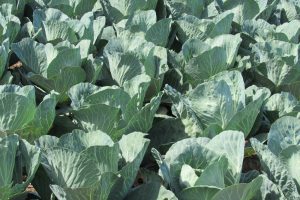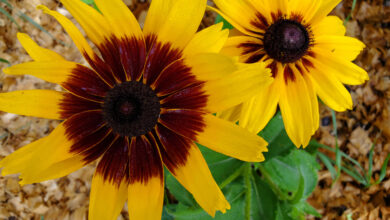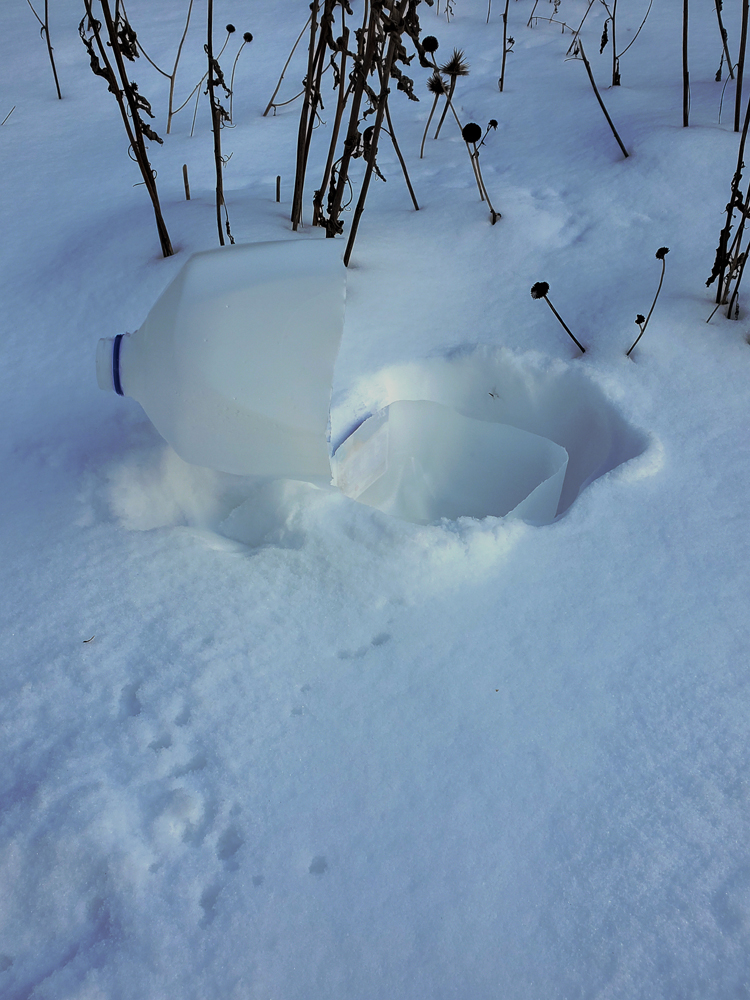Cabbage

“But always, to her, cabbages were to be jade and burgundy, chrysoprase and porphyry. Life has no weapons against a woman like that.” That is how Selina Peake, the resilient heroine in Edna Ferber’s So Big, sees a cabbage field – full of lustrous colored gemstones. Although that vision might be a bit romantic for you, cabbage is a beautiful, tasty, nutritious (although often stinky) vegetable, often under-appreciated and under-utilized. If you did not grow your own cabbage this year, it is readily available at farmers markets and grocery stores and this is a great time to add it to your fall seasonal vegetable rotation.
Cabbage is a hardy vegetable that likes fertile soils, and as the literary quote at the beginning of this column implies, cabbages come in various shades of green as well as red or purple. Most cabbage varieties have smooth leaves but Savoy cabbages have beautiful crinkly textured leaves that are green.
Cabbage can be started from seed, but transplants are usually readily available in springtime from local garden centers. You might even want to consider them for edible landscape plantings, especially if you appreciate their beauty as much as Selina. Nutritionally, cabbage is a source of vitamins and even has disease-preventative properties.
You can plant cabbage early in the spring as hardened plants are tolerant of frosts. Late cabbage is planted in mid-summer, developing its main head during the cool weather of fall. Plants should be spaced 12 to 24 inches apart – the closer the spacing the smaller the heads. Early varieties tend to produce smaller heads than later varieties. Nitrogen fertilizer is recommended as a side-dressing and cabbage needs plenty of soil moisture to produce a good head of leaves. If you plant late season varieties, make sure to provide enough water to help plants deal with the intense sunlight and heat of mid-summer.
Harvest your cabbage anytime after the head forms. For the highest yield, cut heads when they are solid but before they crack or split (this can happen after heavy rain late in the season). If cabbage splits before harvest, the internal tissue becomes unusable. Harvest and salvage any split heads as soon as they are discovered.
Cabbage is susceptible to yellow or fusarium wilt and blackleg and black rot. Look for disease resistant varieties. If you find diseased plants in the garden, remove and dispose of them. Do not add to your compost pile. Additionally, do not overcrowd, overwater or plant cabbage in poorly drained soil.
Insect pests can also be a problem. Cabbage aphids, cabbage root maggot, cabbageworms, flea beetles, cutworms, cabbage loopers and slugs are common pests. Row covers, hand picking, spraying aphids with a heavy stream of water, weed control and cardboard collars for cutworms can be helpful. Be sure to monitor your crop closely.
Cabbage is a cruciferous vegetable and may reduce the risk of some forms of cancer including colorectal cancers. It is high in beta-carotene, vitamin C, vitamin K and fiber. Illinois Extension says to reduce odor, do not overcook cabbage. Cook just until tender and use stainless steel pots and pans instead of aluminum.
Eat cabbage raw in salads and coleslaws. Mix green and red cabbage for a rainbow coleslaw (apples make a great addition to coleslaw especially in the fall). If you are buying cabbage, choose firm heads that feel heavy and are tightly packed. Store whole or chopped cabbage in a sealed plastic bag in the refrigerator and use within one week. Before use, rinse cabbage thoroughly and remove tough outer leaves. Cut in half and trim the core.
Non-heading varieties of cabbage similar to flowering kale are popular for fall ornamental use. These cabbages have colorful white, pink or red rosettes of leaves surrounded by green or purple outer leaves. I had fun last year growing a variety from seed which could be used as a cut flower. It looked amazing in autumn floral arrangements – great unexpected texture and color for a Thanksgiving centerpiece. Flowering cabbage is also edible.





